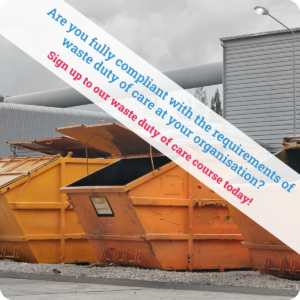The number of people working from home has been rising steadily over the last five years. It’s estimated the UK has over 4 million home workers, representing ~12% of the UK’s 32.6 million workforce; a third of home workers being employees.
The benefits of homeworking are well documented, including increased productivity, lower travel costs and reduced overheads. However, as homeworking is expected to become a long-term or permanent arrangement for many more employees post Coronavirus (Covid-19), this brings new challenges for employers, particularly when managing health and safety.
What do I need to do?
Employers have a legal duty to protect the health and safety of all workers, including those working from home and they need to ensure they stay on the right side of the law. Employers are required to consider the type of work activities carried out, whether they can be done safely and what, if any, control measures are needed to protect their employees. Carrying out a homeworking risk assessment for each home worker will provide employers with the information needed to identify any health and safety risks. It’s the responsibility of employers to ensure this is done where homeworking is intended to be a long-term or permanent arrangement.
What is a homeworking risk assessment?
A homeworking risk assessment is designed to assess whether the home workplace is suitable and to enable the employer and the home worker to identify and address, as far as is reasonably practicable, any health and safety risks identified.
What should a homeworking risk assessment include?
A homeworking risk assessment should consider the following:
- The working environment:
The suitability of the home workspace should be assessed, including lighting, ventilation, temperature and trip hazards. It’s the responsibility of the employee to rectify any flaws in the home highlighted by the assessment, to keep the working environment safe and to take reasonable care of their health and safety. - The activities being carried out:
The majority of work carried out in the home is typically low-risk office or desk-based work, however, higher-risk activities may also need to be carried out, and the assessment should support to identify where this is the case. - The workstation:
A DSE assessment must be carried out to ensure the workstation is suitable and the employee has the work equipment needed to do their job safely. In addition to a desk and an adjustable chair, other work equipment may be required, such as a footrest, monitor stand, laptop riser etc.; the need for these should be identified through the assessment. Employers should also provide advice on reducing DSE risks such as taking frequent breaks, changing positions, stretching techniques, resting eyes etc. - Supply and maintenance of work equipment:
Where homeworking is no longer a temporary arrangement, employers are responsible for providing all of the work equipment required for the employee to do their job from home. The majority, if not all, of the work equipment requirements will be identified through the DSE assessment. Employers are also responsible for the maintenance and inspection of any electrical equipment provided and consideration will need to be given as to how these requirements will be met. Support should also be provided for the employee to set up any new equipment or technology. It’s the responsibility of the employee to ‘look after’ any work equipment supplied and report any defects or damage to their employer. - Employees with disabilities:
Employers have a duty to consider and make reasonable adjustments for home workers who have disabilities. Employers should consult with all employees who have existing reasonable adjustments in place to identify what, if any, revised adjustments are required and what can be reasonably implemented. - Health & wellbeing:
It’s important for employers to consider the mental wellbeing of its home workers, particularly for those employees who may never have worked from home for prolonged periods before. The assessment should support the employer to identify the control measures required to reduce stress, isolation, lack of social contact etc., with regular communication being one of the most important practical measures that can be introduced. - Personal safety:
Working alone presents further challenges for the employer regarding personal safety and mental wellbeing. The assessment should identify these risks such as accidents in the home, becoming unwell and support with the identification of relevant control measures such as buddy systems, checking in, clear reporting processes, emergency contacts etc. - Fire safety and first aid:
A homeworking risk assessment should include fire safety considerations such as flammable materials and ignition sources. Anyone working from home should also have a working and regularly checked fire alarm or smoke detector. Low-risk home workers do not require any first aid equipment beyond normal domestic needs however, first aid provision may be required for any higher risk activities carried out.
Employers should ensure that homeworking risk assessments are reviewed periodically.
Employees are responsible for informing their employer if any of the homeworking measures implemented are inadequate and/or they have any concerns in relation to their health and safety in the home.
Further information & support
IOSH have produced a handy guidance document with a useful homeworking checklist which can be found here.
Our team of experienced consultants can also offer further guidance and support on your legal duties. If you have a question about managing health & safety compliance, contact us.
